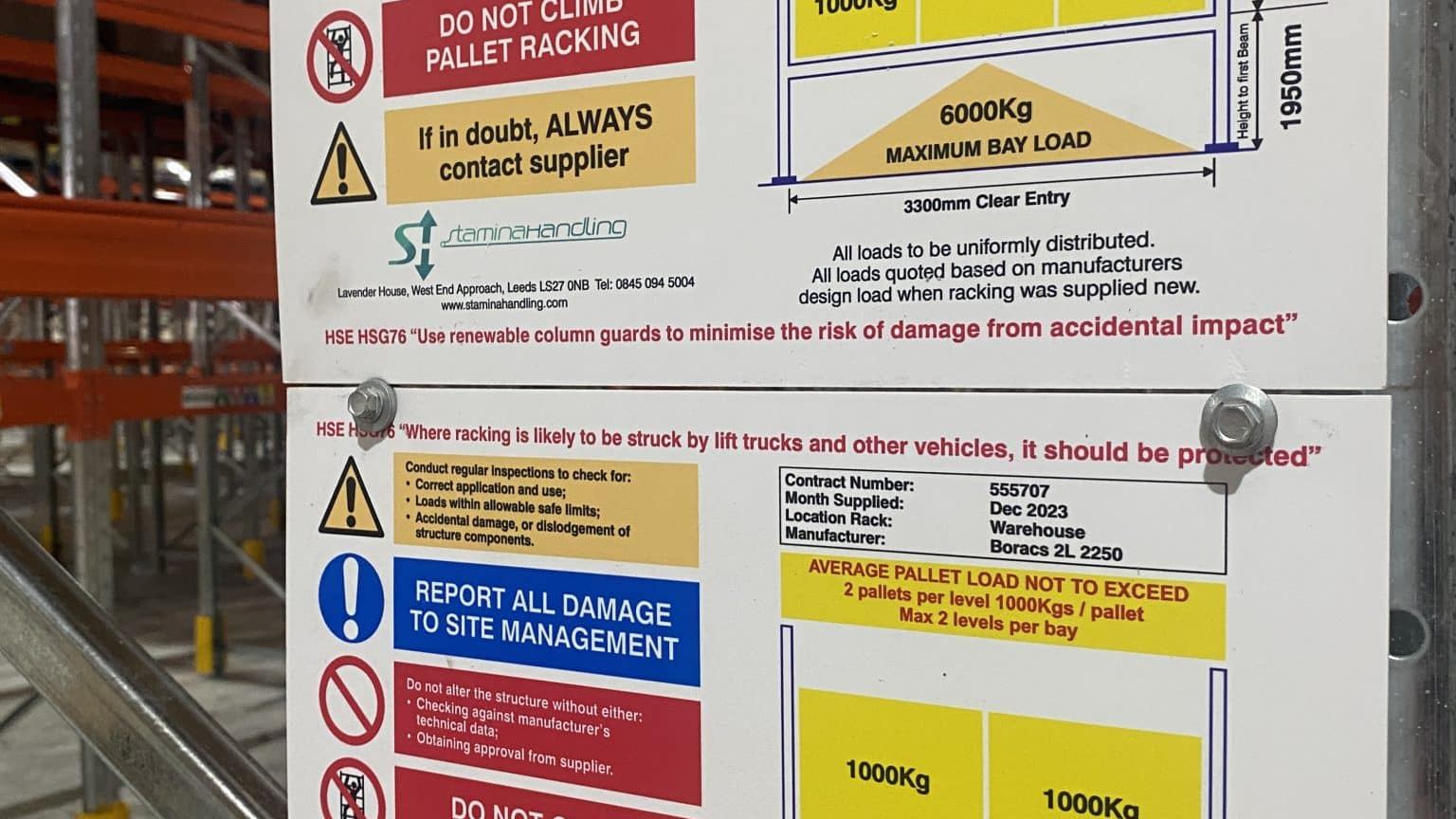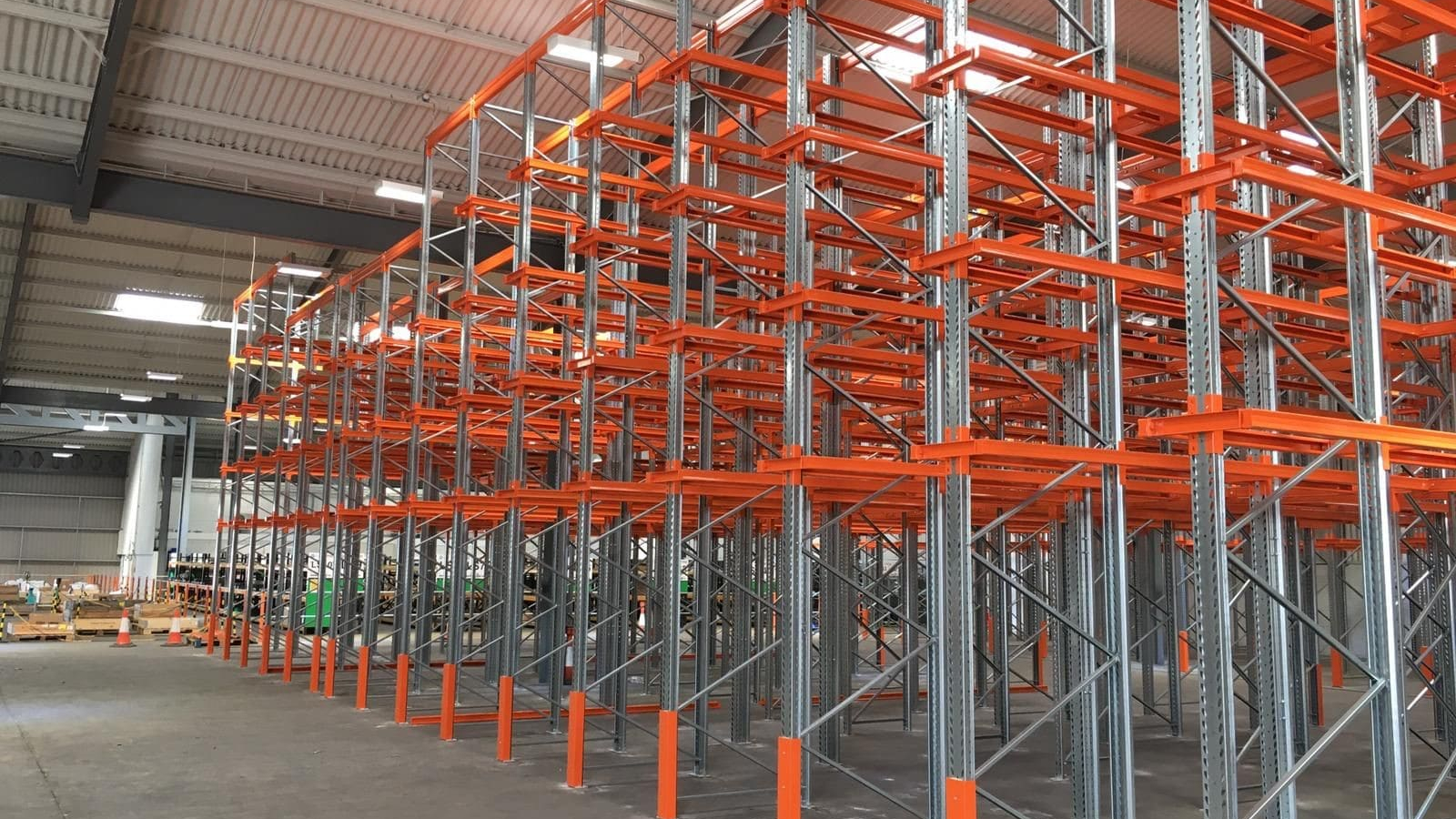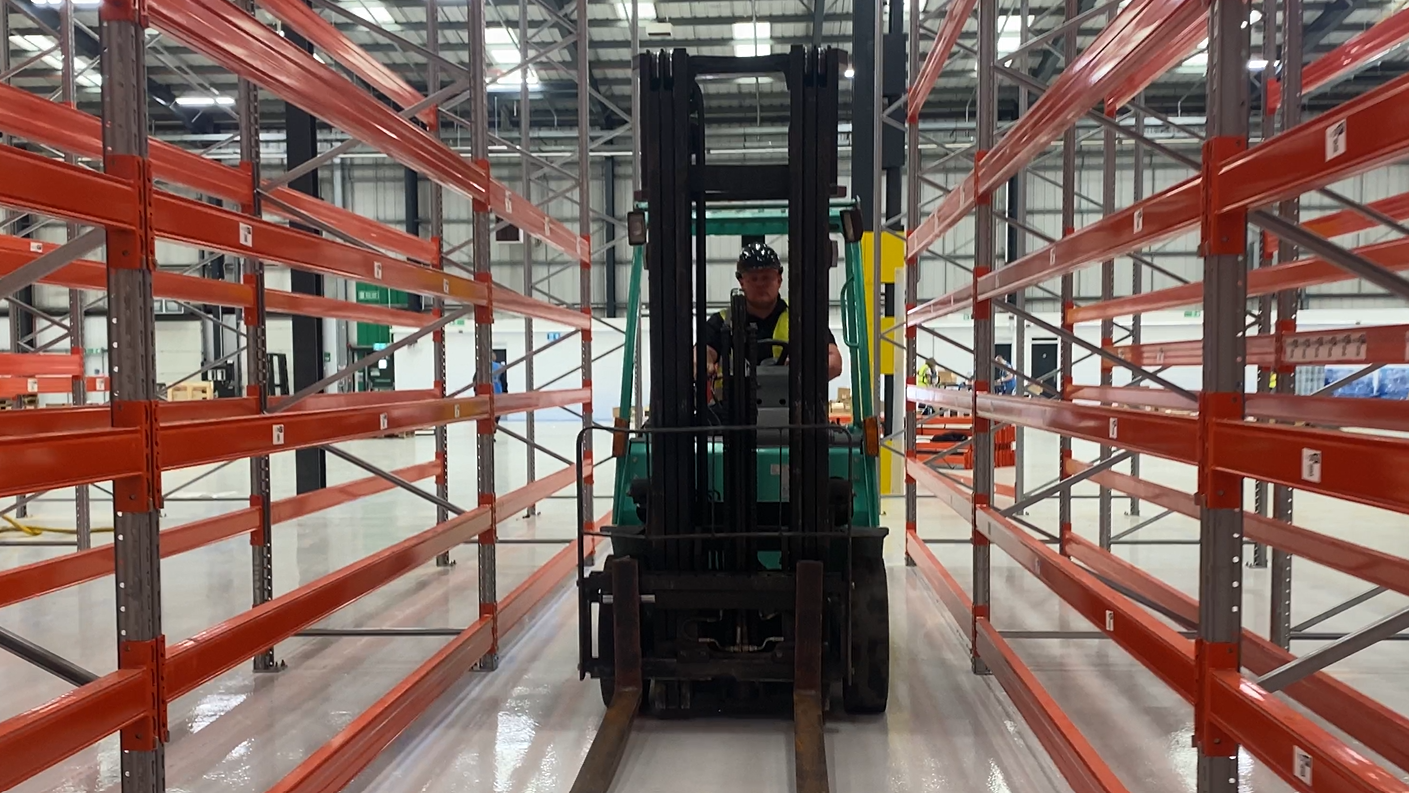When setting up pallet racking in your warehouse, it’s essential to get it right from the start. Not only can mistakes lead to inefficiencies and safety concerns, but they can also be costly in terms of both time and money. You’ll want to avoid these common pitfalls to ensure you make the most of your pallet racking system. Below, we outline key mistakes to steer clear of when planning or installing your racking system.
1. Underestimating weight limits
All pallet racking systems comes with specific weight capacities for both individual shelves and the entire structure. Failing to take this into account can lead to structural failure, damages stock or even injury. Make sure you know the weight of the items you’re storing and choose a racking system that can handle it. Always consider factors like the weight distribution across shelves and whether the racking system is suitable for all the heavy items you will be storing.
Tip: Regularly check your inventory to ensure your racking system is always in line with your storage needs. You should also have loading signs installed on your racking to refer to the weight capacities.

Not planning a layout
The layout of your racking system is critical to the smooth operation of your warehouse. A common mistake is rushing through this step, leading to an inefficient or disorganised system that doesn’t fully utilise your warehouse space. You need you need to consider the flow of goods, the space required for forklift movement, and accessibility of frequently used items as well as any future growth plans.
Tip: Plan for wide aisles if you use large equipment like forklifts, and optimise aisle widths based on the size of your racks. Keep high-turnover stock in easily accessible areas to improve workflow. Opting for systems like Drive-In racking or Shuttle Racking could be good options for warehouse with less floor space.

3. Ignoring safety standards
Safety should always be a top priority. Inadequate installation, failure to follow safety regulations, or not using the correct safety equipment can all pose serious risks for your business. For example, improperly secured racks can tip over, causing damage to products or injury to staff.
Tip: Always adhere to safety standards set by the Health & Safety Executive (HSE) or other relevant authorities like SEMA. Regularly inspect racks for any signs of damage or wear, and train staff on safe loading/unloading practices.
4. Overloading shelves
Overloading the shelves is a common error that can not only damage the racking but also compromise the integrity of your storage. This can occur if warehouse managers do not properly calculate the weight of items or ignore weight distribution.
Tip: Avoid putting too much weight on individual shelves, and be cautious about stacking items too high, as this can also pose a tipping hazard. Keep a close eye on the condition of your racks. If in dealt, contact a racking expert like Stamina who would be happy to help.
5. Failing to future proof
Business needs can change over time, and it’s important to consider future expansion when choosing a pallet racking system. Too often, managers pick a system that only fits their current needs, without considering how the system will handle future business growth in terms of both space and inventory.
Tip: Choose a pallet racking system that can be easily adjusted or expanded as your warehouse needs grow. Think ahead about how your product offerings might change over the next few years.
6. Not using the correct type of racking.
There are many different types of pallet racking systems (e.g., adjustable, push-back, drive-in, and cantilever racks), and each serves different purposes. Using the wrong system for your type of inventory can make the entire warehouse less efficient.
Tip: Consider your product types, picking frequency, and available floor space before choosing a racking system. For example, high-density racking may be ideal for slow-moving items, while selective racking might work better for fast-moving inventory. If you are unsure which type of racking to choose, contact the team at Stamina for help.
7. Overlooking maintenance and carrying out regular rack inspections
Pallet racking systems require regular maintenance and inspections to ensure they remain safe and functional. Ignoring routine checks for wear and tear or structural damage can lead to dangerous situations.
Tip: Set up a regular racking inspections with a qualified inspector, paying close attention to areas like beam connections, anchors, and uprights. Perform maintenance when needed and replace any damaged parts immediately to avoid accidents. Stamina will stock parts from all the leading manufacturers, so contact us for help.
8. Not taking into consideration the forklifts
Forklifts are essential for moving goods around, but improper use can cause severe damage to pallet racks. Whether it’s striking a rack with the forklift or overloading a forklift, careless use can create long-term issues that affect safety and productivity. You can also take extra measures to protect your racking, like installing rack protection guards and barriers.
Tip: Train forklift operators thoroughly on the proper use of equipment around pallet racking. They should be aware of the load limits and how to navigate tight spaces without causing damage.

9. Choosing the cheapest storage option
While it can be tempting to go for the cheapest pallet racking option, cutting corners on quality can lead to bigger problems down the road. Subpar materials or poorly designed racks can compromise the safety of your warehouse, reduce efficiency, and require frequent replacements.
Tip: Invest in quality racking that offers both durability and efficiency. Make sure the supplier adheres to industry standards and offers warranties or guarantees on their products.
10. Not training your staff
Employees should be trained to know how to safely load and unload pallets, as well as how to properly maintain the racking system. Lack of training can lead to accidents and errors that affect operations.
Tip: Provide comprehensive training to all warehouse staff on the safe handling of palletized goods and the specific features of your racking system. This will improve both safety and productivity in the long run.
